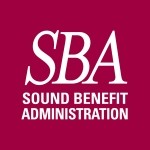Q: Is there a general rule to determine if an expense is eligible for reimbursement through a Health Savings Account or a Flexible Spending Account?
A: Actually, yes, there are some guidelines. The first part of the general rule is that medical care must be “for the diagnosis, cure, mitigation, treatment or prevention of disease.” “Diagnosis” means using any procedure to find out whether someone has a disease or dysfunction. Hearing, vision, and blood tests; CT scans and urine analysis are all examples of diagnostic tests. “Cure” means a medical treatment or drug used to restore health, such as using chemotherapy to treat cancer. For care to “mitigate,” it must make a medical condition less harsh or severe. Examples include a wheelchair if a participant has multiple sclerosis and a seeing-eye dog for a visually impaired child. “Prevent” requires that the care involve the immediate and proximate prevention of a disease, defect or illness, and that the disease, etc. be imminent. An example here would be if the doctor prescribes an antibiotic to prevent infection from an animal bite. Examples of expenses for the purpose of “affecting any structure of the body” include operations or treatments affecting any portion of the body, such as obstetrical services and X-rays are also allowed.
If an expense involves some personal benefit (as well as medical care), it is not so easy to be sure that the “primarily for medical care” test is met. We find dual-purpose items such as gluten-free foods, exercise machines, vitamins, etc. become hard to verify and require a note from a physician stating that the item is absolutely for medical care and not just for personal benefit.
-Gina
Source: EBIA Cafeteria Plans Editorial Staff
